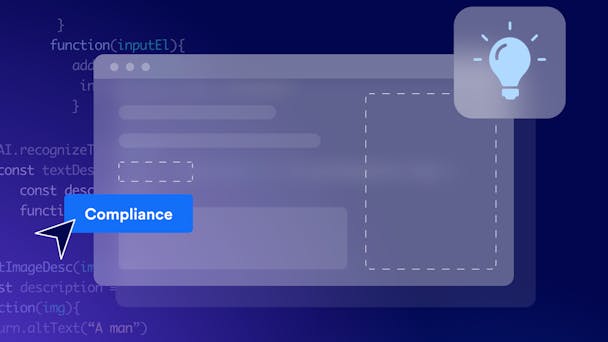In today's modern world, people spend a good chunk — if not the majority of — their time on the internet

This new digital paradigm has created a need for the builders of web services to adjust and make sure the content is available for all users — web accessibility and data privacy being two of the most necessary accommodations.
Running a modern website or app without proper data privacy and web accessibility strategies is no longer ethically acceptable or morally right. Being morally right means being inclusive, accessible, and transparent with your data collection practices. Ignoring these two crucial aspects puts you at legal risk, reputational risk, and the risk of losing market share.
With that said, here are 11 tips to help you build a data privacy compliant website that everyone can access.
1. Follow Guidelines
The present WCAG provides international guidelines for websites to ensure they are accessible for all people. These guidelines are mainly directed towards web developers, designers, and experts. They explain making your website more accessible and are arranged under four standards: perceivable, operable, understandable, and robust.
These recommendations have three conformance levels:
1. A - minimal
2. AA - satisfying
3. AAA - excellent
Implementing these standards is time-consuming. However, starting with the essential steps can have a massive impact on making your website more user-friendly and inclusive to those with disabilities that the WCAG accommodates.
2. Accessibility Guide and Statement
You can publish an accessibility statement on your company's website. This statement should confirm your company's commitment and intention to make your website more accessible for everyone, including those with disabilities.
It should also include contact information for circumstances when visitors find issues with the accessibility of your website.
3. Navigation by Keyboard
Many people with disabilities rely on adaptive keyboards and other assistive technology to navigate the web. Therefore, your website should have a keyboard-friendly layout to accommodate such individuals. This would mean avoiding things like animating navigation buttons as dropdown buttons if they aren't compatible with screen readers.
4. Transcripts and Closed Captions
Audio and video content can limit the experience of visitors with visual or hearing impairments. One way to overcome this barrier is by providing text transcripts of the audio and video files.
5. Restrict Automatic Media and Navigation
Users with reading disabilities or those who use screen readers take time to navigate a website. Media that automatically plays is frustrating for users and also interrupts screen readers. And, given that not everyone reads at the same speed, automatic navigation does not allow most people to fully absorb the information on a page.
6. Accessible Rich Internet Applications (ARIA)
ARIA is a simplified set of HTML attributes that provides guidelines on making your website more accessible for people using assistive technologies.
7. Privacy Policy
Your website should contain a comprehensive privacy policy that fully shows the collected information and how your website uses it. It should also specify the relevant applicable laws and the rights available to the user under these laws. There are a few ways to create and implement a privacy policy, but your safest bet is to use a privacy policy generator to ensure full compliance with data privacy laws.
8. Notify Users
Users need to be provided with clear information about the various cookies used by your website, the kind of data it stores and processes, the purpose for such storage, and where that data is going. This also requires you to design a straightforward interface that is easy to navigate to privacy information.
9. Allow Opt Out
You should provide your users with an opt-out feature through a "Do Not Sell My Personal Information" option on your website. This should allow the users to opt out of selling their personal data to third parties.
10. Appoint a Compliance Officer
Appoint a compliance officer to lead regular training programs to ensure that employees can handle consumer inquiries in a timely and consistent manner that fulfills the various requirements. The compliance officer will also ensure that the company's data privacy and web accessibility policies are fully compliant with the laws.
11. Breach Alert
Companies must notify the concerned authorities of any data breach that may have occurred. Even though you can never be fully protected from such breaches, you should have a good monitoring and breach reaction plan in place.
This plan would include maintaining a regularly updated list of emails of the users whose personal data you have saved and informing the concerned authorities and users of the breach within 72 hours of the incident.
Conclusion
As the world becomes more digitized, intricacies and obligations are also changing. Web accessibility and data privacy compliance are now essential for any company or website to survive. The size of your business is irrelevant, and even if you have an existing compliance program, there is always a margin for improvement. Ensuring that your site is accessible to everybody is something that you need to do because it’s morally right and fosters a culture of inclusion, alongside the important compliance aspects of web accessibility and data privacy.

